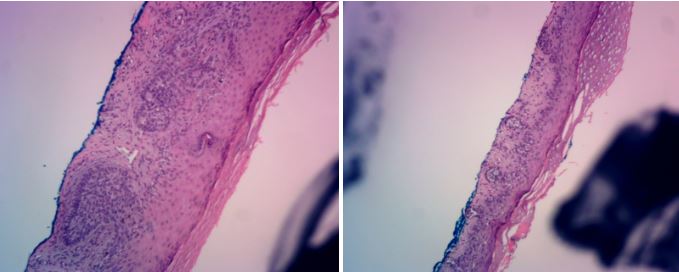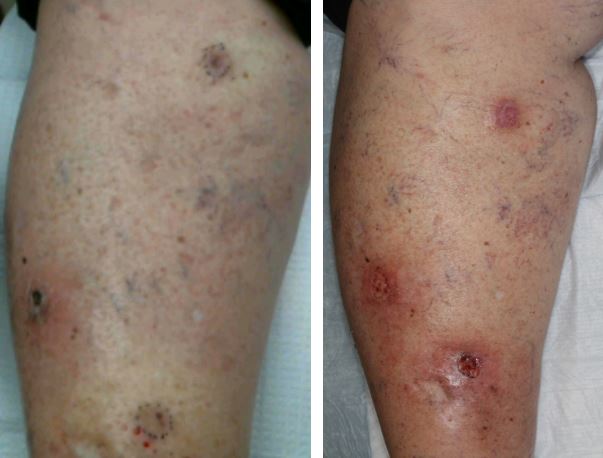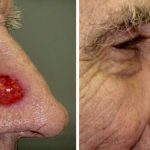Shave excision of Lower Extremity Carcinomas
HISTORY
67-year-old woman presents with 3 BCCs on right lower extremity diagnosed on shave biopsies. Superficial shave excisions of the carcinomas left close margins within 0.1 mm. Second set of shave excisions found no residual carcinoma.

Lower leg presentation with three BCC’s diagnosed on shave biopsies.

Shave excision of basal cell carcinoma with Dermablade. Deep dermis is spared.

BCC leg shave excision. Margins close within 0.1 mm.
DISCUSSION
Lower leg skin carcinomas are often superficial and can be treated with superficial treatments. This patient’s case represents superficial surgical treatment with shave excisions. A dermablade was used for each shave excision. The specimen was inked at 12 o’clock for orientation. The goal of this approach is to preserve as much of the deep dermis as possible. Secondary intention healing is better supported with greater dermal sparing. Dermis provides structural support for the wound and blood supply necessary for healing. Notice how the patient’s higher wound is healed 1 month after shave excision while the two progressively lower wounds show progressively delayed healing.
Curettage and desiccation is another well-proven technique for superficial treatment of lower extremity skin cancers. Shave excision, however, has the advantage of histologic margin determination and is more conducive to better healing than a cauterized wound.

Clear margins achieved with two shave excisions. Wound healing 1 month after second set of excisions. Higher wounds show faster healing.

